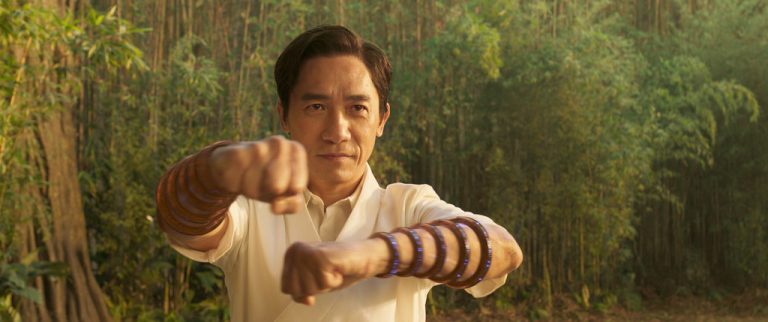Female Directors: The first women with the Big Voice
What comprises a great female director is the same recipe for what comprises a great director. So must we look at female directors within their own subcategory?
To be a director, simply put, is to be a boss. It is to command attention, acclimate respect, and lead with force of voice. However, there are things women are often robbed of: on this long list are command, respect, and voice. Therefore female directors are individually and collectively stories of great success. They are not doing the same labor as their male counterparts. What they are doing is much harder, and the fruits of their labor are sweet, bitter, sour, and delicious.
Are women able to plant their feet in the world of film?
Not without great effort, women are still severely lacking employment in the labor field of film production. “In 2022, women comprised 24% of directors, writers, producers, editors, and cinematographers working on the top 250 grossing films, down 1% from 2021,” says Forbes. Despite emerging diversity with female directors and the wide history of acclaimed films produced by women, they are still boxed out. In regards to the top-grossing films of 2023, of the 116 directors involved in these films, only roughly 12% were women.
The labor culture of the late 1800s and most of the 1900s drank from the pool of female domestic ideology. In other words, the workforce did not welcome women with open arms (unless there was a war). A career path for a woman was not a walk through the garden, unless the garden was filled with toxic thorned woman-eating plants. Forging space in any non-domestic field was a difficult endeavor, specifically in the world of directing.

The trailblazers we can bow our heads to
The first glass ceiling was shattered over the head of Alice Guy-Blache, a French director who is estimated to be the first recorded female director in the world. Guy created her first film in 1896 and started a reputation as a risk-taker who harpooned aesthetics for storytelling. She is credited with the production, supervision, and assistance of over six hundred films.
Fatma Begum also broke her own glass ceiling, on a different continent. Begum grew up in India in the late 1800s and early 1900s, during which a patriarchal cultural climate reigned. Women were not often allowed even in acting roles in film, based on gender-based ideas of respectability. Fatma Begum, in the 1920s, expelled all these ideologies by entering into the world of acting and directing. In 1926, she began her own production company. Fatma Begum changed the Indian cinematic landscape by creating a space for women to market their own experiences.
Ida Lupino also entered the sphere of film creation through a career as an actress. Lupino was glitz out in fame in the 1940s when she became bored of taking orders and began watching the directors behind the megaphones with a certain gleam of envy. Lupino and her husband started an independent film company, through which she produced, directed, and wrote several film features. Creating friction in the world of cinema, Lupino produced films that centered around the ugly things often left alone to rot in the real world far away from the silver screen. Lupino’s films cover topics of premarital sex, bigotry, rape, and disease such as polio. On the back of her director’s chair read: “Mother to us all”.
If Lupino was a mother of female-directed film, Vera Chytilova would be the wacky aunt who watched the kids every other day. Just as important, but maybe more eccentric. Vera Chytilova flowered her career in Czechoslovakia through the Soviet Union invasion which constricted her life and the life of all other Czech citizens at the time. After the release of her surrealist and woman-centric film “Daisies” (1966), she was banned from directing. Chytilova kept her creative functions alive by directing advertisements under her husband’s name. After writing a letter to the president at the time of Czechoslovakia, she was once again allowed to produce film. Chytilova was strong-willed in her socialist, anti-consumerist, and individualist rhetoric which breathed into her films.

Larisa Shepitko, a Ukrainian director, faced the same Soviet regime censorship. She kept producing films even if they were banned, regardless of any other ailing outside factors. Shepitko gave her films her all, and that is no hyperbole. During a film, Shepitko developed Hepitatis and directed from a stretcher. She additionally worked in climates so hot that the film melted within cameras, and climates below freezing wearing the same clothes as her actors to assimilate to their levels of discomfort. Her film style is appraised as realist and naturalistic, which she achieved through a certain intimacy and focus on the subtleties of the body. She died while scouting a location for her final film.
Why do we need women to tell stories?
There is no point in stressing the importance of representation, as that is widely accepted as a fundamental cause and effect in self-image and societal function. So why can’t we trust men to dictate how we are shown on a screen? There is a fate that men often fail to evade when depicting women. This fate is a catalyst of the tunnel vision called the male gaze.
Much like the screen shutters from the sight of a man un-empowered, it also winces at a woman unsexy. It wasn’t until directors like Nancy Meyers that we began to see stories of old women, problematic women, and complex women.
Men understand women in relation to themselves, but woman is no extension of man. Low budgets, dirty looks, and all; women will keep making film.



